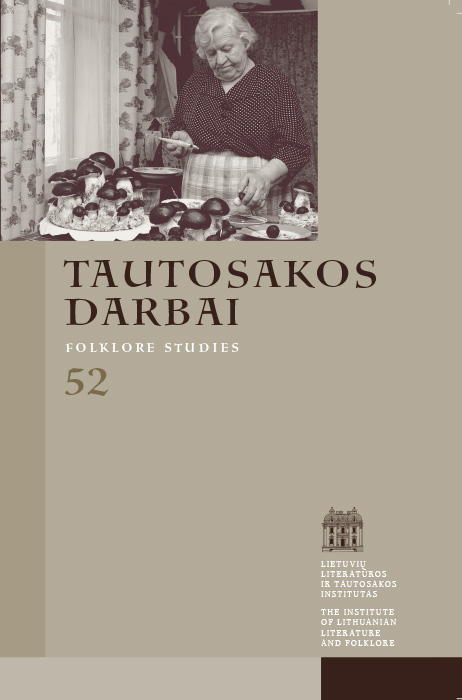Amalas ir kitos laumės šluotos lietuvių tradicinėje kultūroje
Santrauka
Straipsnio tikslas – surinkti ir susisteminti duomenis apie paprastąjį amalą (Viscum album) ir ant medžių augančius kitus gamtos darinius, kaip antai šluotą ar paukščio lizdą primenančias ragangrybio sukeltas šakelių deformacijas, atskleisti jų vaizdinį lietuvių tradicinėje kultūroje. Aptariami šių augalų pavadinimai, analizuojami amalo ir ragangrybio sukeltų šakelių sutankėjimų atsiradimą nusakantys etiologiniai naratyvai, nagrinėjamas jų vaizdinys tautosakoje, liaudies tikėjimuose ir papročiuose. Pristatomų augalų vaizdinį lietuvių pasaulėžiūroje padeda atskleisti turimos medžiagos lyginimas su kitų šalių mitologijos duomenimis, tikėjimais, papročiais. Tyrimas parodė, kad senojoje lietuvių pasaulėžiūroje amalui teiktos vegetacijos, gyvybingumo, vaisingumo simbolinės reikšmės. Ir amalo, ir rutuliškai suaugusių ragangrybio paveiktų šakelių vaizdiniai mitinėje-simbolinėje plotmėje kai kuriais atvejais tapatūs, jiems priskiriamos analogiškos apsauginės galios.
Atsisiuntimai
Skaitomiausi šio autoriaus(ų) straipsniai
- Jurgita Macijauskaitė-Bonda, Kas išmano, tas jas gano, arba Naujoji lietuvių mįslių rinktinė , Tautosakos darbai: T 57 (2019)
